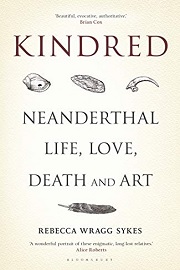Kindred: Neanderthal Life, Love, Death and Art

Rebecca Wragg Sykes
Bloomsbury Sigma, £20.00 (Hardback)
Since the first identification of Neanderthal remains, discovered in the Neander Valley of Germany in 1856, studies of this hominid species have proved to be exciting, enigmatic and enlightening. Neanderthals, the descendants of Homo erectus immigrants from Africa into Europe, have until recently been considered as uninventive, socially limited due to language constraints, and lacking artistic talent.
New fossil finds, improved age-estimation techniques and palaeoenvironmental investigations have altered this picture considerably. Moreover, the development of DNA analysis of fossil remains has had profound implications for understanding hominid characteristics and inter-species relationships, not least for Neanderthals. Indeed, a substantial proportion of the current world population of non-African origin carries a small percentage (1 to 2 per cent) of Neanderthal genes.
Drawing on a wide range of evidence derived from Neanderthal archaeological sites distributed from Wales throughout Europe and into Siberia, a comprehensive view of Neanderthal life, material wealth and death is presented. Neanderthal uses of stone, bone, shell and wood is examined and attention drawn to the use of red ochre for art works.
Emphasis is placed on survival and lifestyle; Neanderthals were communal and co-operative as well as nomadic. To live their lives and obtain food, they adjusted to local floras and faunas; such biota changed with climatic characteristics in space and time (e.g. Ice ages and interglacials) but Neanderthals coped and survived. In relation to death and burial, there is much discussion re specific practices but most ‘burials’, either single or multiple body, reflect thought and organisation. There is also much debate about language and communication.
Throughout this text, ideas and theories are highlighted, illustrated and debated using examples from established Neanderthal remains and sites. Certainties and possibilities are posed and discussed. At £20 for the hardback it is eminently accessible.
A.M.Mannion


